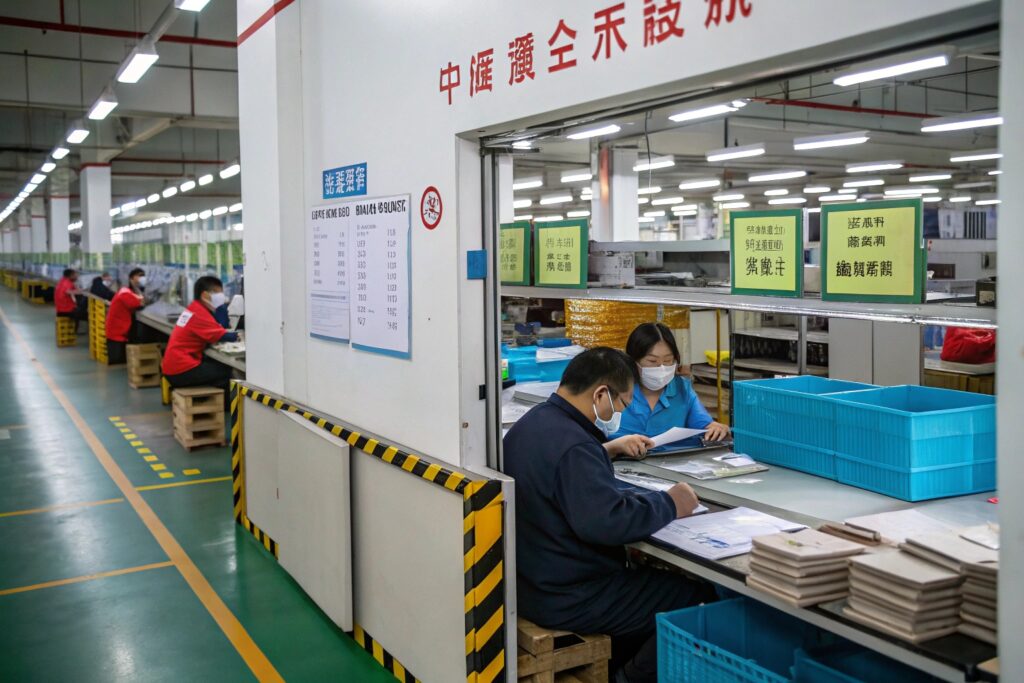As brands face increasing pressure to uphold human rights and environmental responsibility, ethical manufacturing audits have become essential. Especially in the hair accessory industry—where production often happens overseas—knowing how and what to inspect can protect your brand from reputational risk.
Auditing ethical practices at hair accessory factories involves reviewing labor conditions, workplace safety, fair wages, working hours, chemical usage, and environmental responsibility through third-party inspections or self-assessment protocols.
In this guide, I’ll walk you through the critical steps to audit your suppliers properly, what standards to use, red flags to watch out for, and how we at HairAcc pass compliance audits from top global buyers.
What Ethical Standards Apply to Hair Accessory Factories?
International frameworks help define what ethical labor and safety should look like
To audit a hair accessory factory, you should align with recognized ethical standards that assess social responsibility, worker safety, and environmental conduct.

Here are the most relevant audit standards:
| Standard | Focus Area | Recognized By |
|---|---|---|
| BSCI | Worker rights, safety, hours, wages | EU fashion brands, Amazon Europe |
| SEDEX/SMETA | Transparency, ethics, environment | UK, AU, and ethical retailers |
| WRAP | Apparel-specific labor audit | American brands, licensed merch |
| SA8000 | Social accountability & HR systems | NGO-led, for public disclosure |
HairAcc’s Ethical Certification
We undergo annual BSCI and SMETA audits, with high compliance scores in:
- Health & safety
- Working hours & rest days
- Wage transparency
- Emergency preparedness
- Environmental policies
You can learn more on Amfori BSCI and Sedex Global.
What Are the Key Areas You Should Audit?
Cover both people and process—from factory floor to dorm rooms
Ethical audits go far beyond production output—they check how people are treated, how safe the workplace is, and whether regulations are respected.

Here’s what you must review during an audit:
1. Labor Practices
- Are employment contracts clear and fair?
- Are workers under legal minimum wage?
- Are there any signs of forced labor or child labor?
2. Working Hours & Conditions
- Is there documented compliance with overtime limits?
- Do workers get at least one day off per 7-day week?
- Are fans, lighting, and spacing adequate?
3. Health & Safety
- Fire extinguishers and exits functional?
- Proper ventilation in dyeing or plating areas?
- Workers wearing PPE (masks, gloves)?
4. Environmental Management
- Are chemicals stored properly?
- Are waste materials recycled or disposed legally?
- Any air or water discharge control systems?
We recommend downloading audit checklists from WRAP or using Intertek’s Workplace Conditions Assessment.
Should You Use Third-Party Auditors or Self-Assessments?
Third-party audits offer credibility—self-checks support daily practice
If you’re selling to large retailers, third-party audits are often required. But internal assessments are still valuable for ongoing compliance and supplier development.

Pros of Third-Party Audits
- Neutral evaluation
- Required by platforms like Amazon, Walmart, Zalando
- Buyers take them seriously
Examples: SGS, Bureau Veritas, TÜV Rheinland
Self-Assessment Best Practices
- Quarterly factory audits using custom scorecards
- Anonymous worker surveys for feedback
- App-based tools like QIMAone or Sedex Advance
At HairAcc, we combine both. Our internal QA team conducts monthly health & safety checks and logs them into a shared client dashboard.
What Red Flags Should You Watch Out for During Factory Visits?
Visual and document signs can reveal deeper ethical risks
An audit is not just about documents—it’s about what’s really happening behind the numbers. Pay close attention to these red flags.

Physical Red Flags
- No fire drills or broken alarms
- Dirty or overcrowded toilets
- Excessive machine noise with no ear protection
- Workers sleeping near production floor
Document Red Flags
- Payroll logs identical every month (no overtime? too perfect?)
- Workers unaware of their pay rate
- No accident or grievance log on file
We encourage buyers to spend time interviewing workers privately or using apps like LaborLink to collect honest input.
Conclusion
Ethical audits aren’t just about passing a checklist—they’re about building trust, protecting workers, and making your brand resilient. At HairAcc, we go beyond compliance to create a safe, transparent, and fair production environment for all.
Whether you need a third-party BSCI report, internal compliance data, or factory tour access, we’re happy to support your sourcing goals with full visibility. Ethical partnerships start with openness—let’s build better business together.









